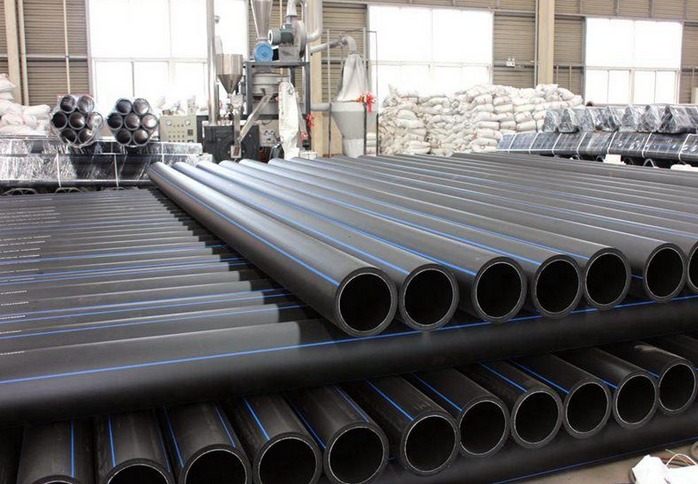- Home
- >
- Industry News
- >
- Brief Introduction of HDPE pipe
Brief Introduction of HDPE pipe
High density polyethylene, the English name for the "High Density Polyethylene", referred to as "HDPE". HDPE is a high crystallinity, non-polar thermoplastic resin. HDPE appearance of the original state was milky white, in the meager section of a certain degree of translucent. PE has excellent resistance to most of the characteristics of life and industrial chemicals. Certain types of chemicals can cause chemical attack, such as corrosive oxidants (concentrated nitric acid), aromatic hydrocarbons (xylene), and halogenated hydrocarbons (carbon tetrachloride). The polymer does not absorb moisture and has good water vapor resistance, can be used for packaging purposes. HDPE has good electrical properties, especially dielectric high dielectric strength, it is suitable for wire and cable. Medium to high molecular weight grades have excellent impact resistance, even at room temperature and at -40F low temperature are so.

HDPE pipe is the traditional steel pipe, PVC drinking water pipe replacement products.
nature
Chemical properties
Polyethylene against a variety of organic solvents, resistance to a variety of acid-base corrosion, but not anti-oxidation acid, such as nitric acid. In an oxidizing environment, polyethylene is oxidized.
Physical properties
Polyethylene can be considered to be transparent in the film state, but in the presence of a massive form, a large amount of crystals are present in the interior thereof, and strong light scattering occurs and becomes opaque. The degree of crystallization of polyethylene by the number of its branches, the more branches, the more difficult to crystallize. Polyethylene crystal melting temperature is also affected by the number of branches, distributed in the range from 90 degrees Celsius to 130 degrees Celsius, the more branched chain melting temperature is lower. Polyethylene single crystals can generally be prepared by dissolving high density polyethylene in xylene at 130 degree or higher.
HDPE pipe development
In the water supply and drainage pipe system, the plastic pipe gradually replaced the cast iron pipe and galvanized steel pipe and other traditional pipe has become the mainstream use of pipe. Compared with the traditional pipe, plastic pipe has the advantage of light weight, corrosion resistance, small flow resistance, energy saving, easy installation, low cost and so on, which is favored by the pipeline engineering community. At the same time, with the rapid development of petrochemical industry, plastic manufacturing technology continues to progress, the rapid growth of plastic pipe production, product variety more diversified.
HDPE pipe is the second after the PVC-U water supply pipe, has become the world's second largest consumption of plastic pipe varieties. PE80 and PE100 grade should be used in the transmission of high-density polyethylene pipe PE50 and PE100 grade PE or PE100 grade polyethylene pipe, PE63 has gradually become obsolete. In the water, the fastest growing is PE100 pipeline system, the next five years, the growth rate is expected to reach 10% or more.
In Europe, HDPE pipe has been more rapid development and application of HDPE pipeline gradually replaced the PVC-U pipeline status, as the main consumer pipeline. At the same time, HDPE pipe in Europe outside the region are gradually being used.
Related recommendation:
The performance characteristics of hydraulic hammer valve
Product recommendation:




;)
;)




